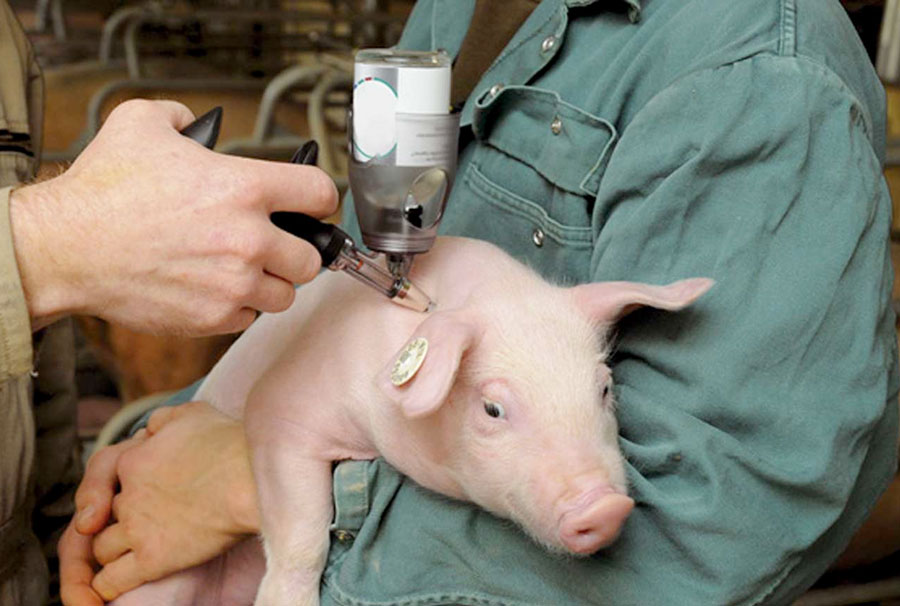In her recent Master’s thesis, Isadora Machado, graduate research assistant at Iowa State University College of Veterinary Medicine measured the amount of antibiotics needed to combat the secondary infections caused by a PRRS outbreak. She found that a PRRSv outbreak on a pig farm was associated with a grow-finish antibiotic use increase. This revealed the importance of preventing PRRSV infection to potentially decrease antibiotic usage.
PRRS is a serious pig disease that has caused huge economic losses for the global pork industry for over 3 decades. Not only do the virus strains of PRRS cause death and illness of pigs directly, but as Machado explains in research, PRRS also has immunosuppressive effects. Because the suite of PRRS viruses lowers immune system effectiveness, it increases the risk of a pig having a co-infection caused by bacterium such as Streptococcus suis and Glaesserella parasuis. “This requires the veterinarian to strategically use antibiotics to treat affected animals, increasing the treatment costs in the growing phase,” Machado notes in her thesis.
Quantifying antibiotics
Machado and her colleagues found that the use of antibiotics in the researched pig farm’s nursery pigs (delivered by injection and through water) increased a huge amount – 379% – during a 15-week epidemic PRRS phase. At the same time, the use of injectable antibiotics also increased 274% in pigs on the farm closer to market weight.
Machado notes in her thesis that the most frequently-injected antibiotic in the nursery phase was ampicillin, with 49% of total injections, followed by lincomycin (31%) and enrofloxacin (20%). In the finishing phase, 72% of injections were lincomycin, followed by enrofloxacin (28%).
Gene editing developments
Meanwhile there are more developments in the field of PRRS. 2 well-established livestock genetics companies are using gene editing to produce pigs resistant to the PRRS viruses. These pigs have undergone a gene edit that results in the lack of a protein on their cell surfaces that, when present, enables PRRS virus entry.
Gene editing is an effective technique where a single gene is involved in a trait; in this case, knocking out a single gene for the production of this surface protein appears to prevent PRRS infection altogether. Resulting offspring from these pigs also have the gene edit.
Obtaining approval
PIC hopes to obtain approval for its PRRS-resistant pig in the US, Canada, China, Japan, Mexico, Brazil and other pork-producing countries such as Columbia. A regulatory determination for future use of this pig in that country was recently released.
A US-based livestock genetics firm called Acceligen also recently started breeding its gene-edited pigs resistant to PRRS.
Virus control
Another way to prevent the PRRS viruses from entering cells is to bind the protein entry ‘gate’ on the pig’s cell surface with a small molecule. In 2023, scientists at the University of Connecticut announced success with using artificial intelligence to screen about 4 million small molecules to find one that appears to have a 100% success rate in lab tests, even at small doses. Tests in pigs are underway.

